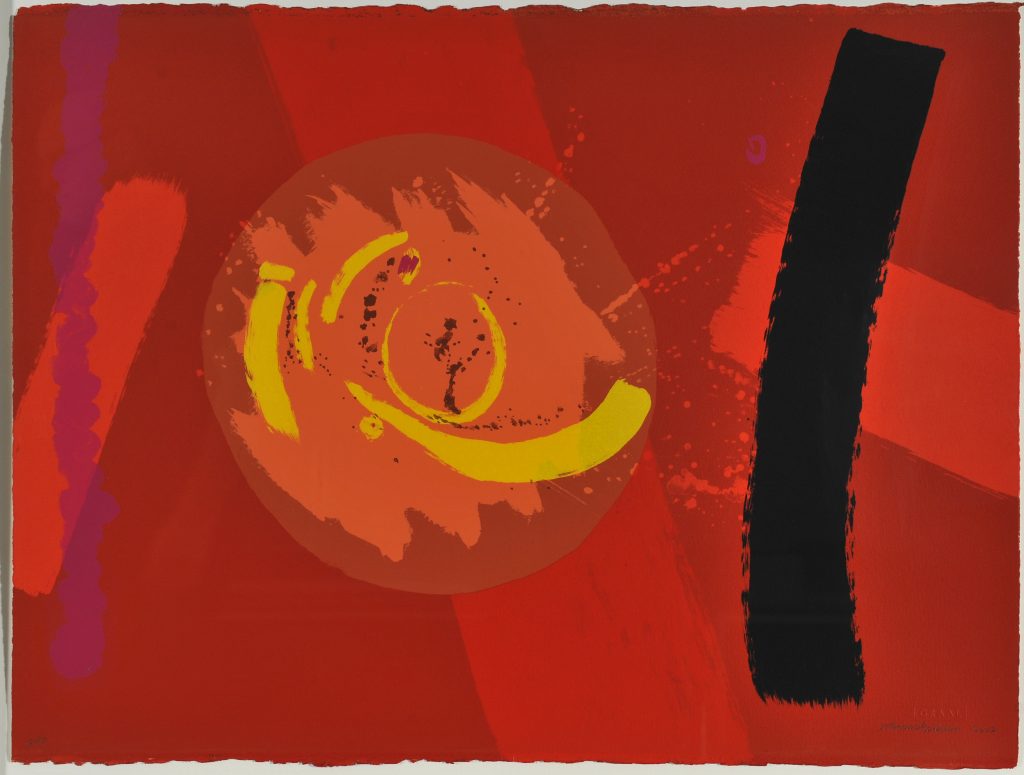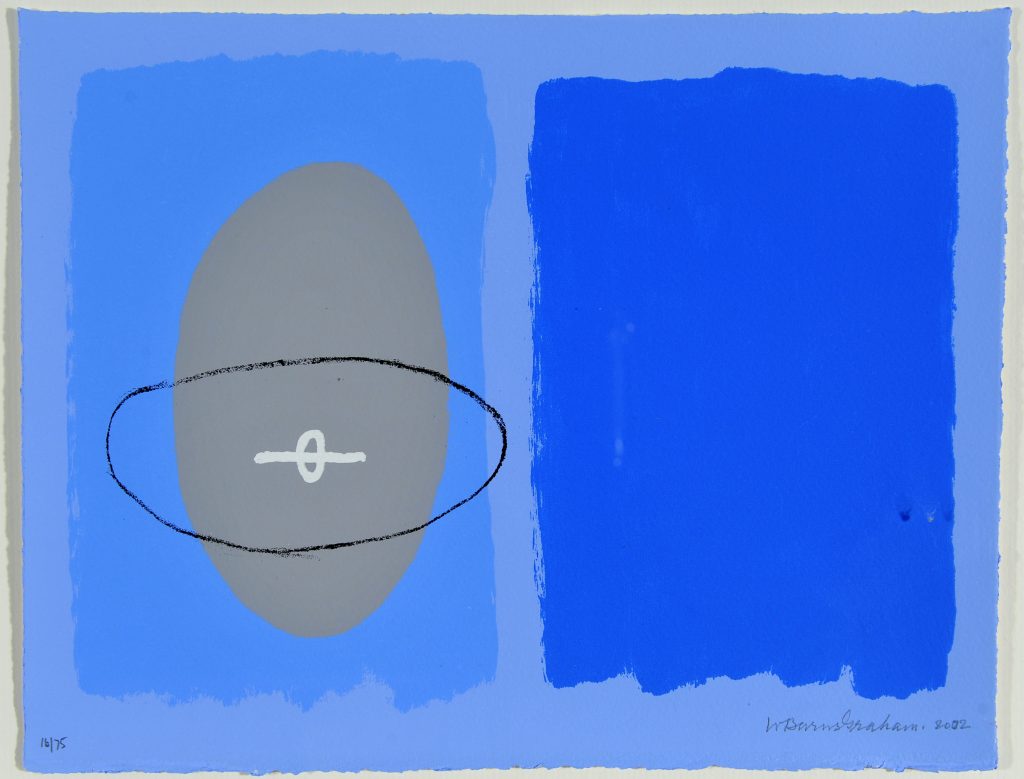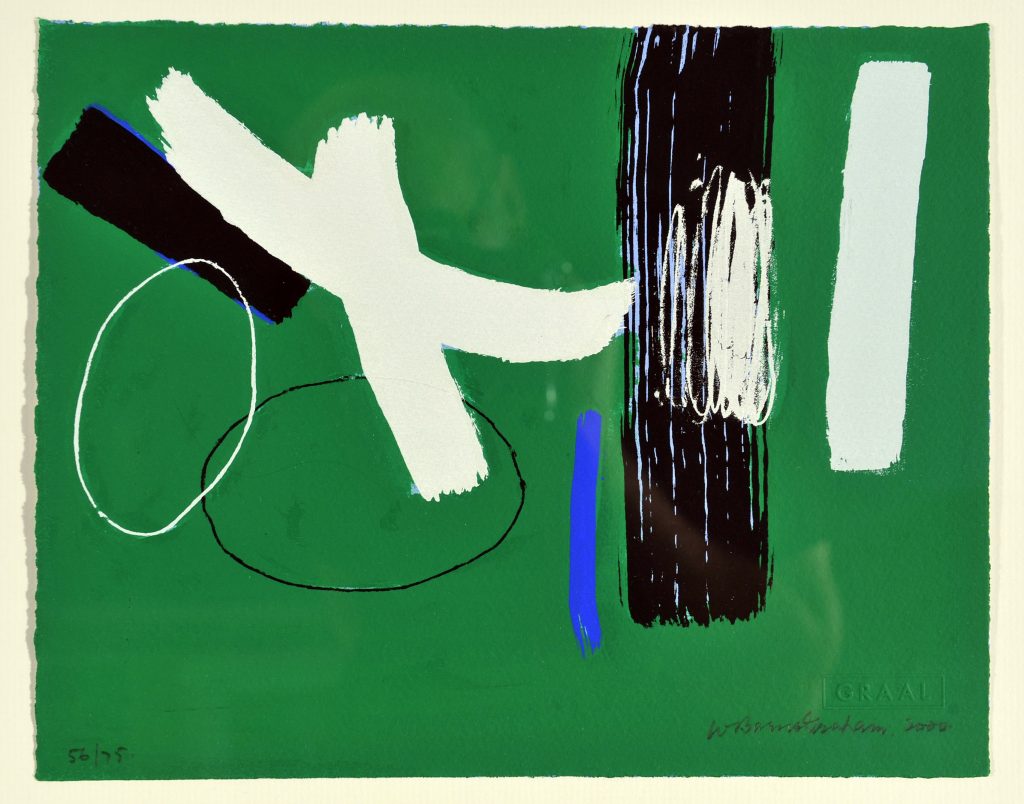In our collections at the Pathfoot, the artwork of Wilhelmina Barns-Graham is sure to make an impression. Colourful and bold, somewhat like Wilhelmina herself, her work played an important part in the development of 20th century British abstract art. As a female artist whose career spanned over 70 years, she remains a significant figure in a world where women have been historically underrepresented. All in all, she is an artist to be celebrated.
Yet, her art career did not begin so smoothly. Born in St Andrews in 1912, she soon began demonstrating her artistic flare, but her talent was not taken seriously by her parents. Wilhelmina’s aunt recognised the young girl’s passion and convinced her parents to allow her to attend Edinburgh College of Art. It was during these years at art school, from 1931 to 1937, where she developed her interest in abstraction. Wilhelmina explains that her paintings ‘weren’t purely abstract but they were abstractions in so far as they were based on an experience’. Since Wilhelmina had synaesthesia, a condition which would cause her to associate colours with people, her daily experiences must have been very colourful and inspiring indeed. During her studies, she was curious to know whether she would make a good artist. When she asked her tutor David Foggie this question replied that she should ‘come and see me in 20 years and tell me if you’re still painting’.
Ever determined, she moved to St Ives upon finishing art school, and joined a thriving community of artists there. This group attracted many talented artists, eager to develop their careers, which increasingly caused the group to become more competitive. Wilhelmina began to feel overlooked but from 1949 she really came into her own. Her 1949 trip to Switzerland inspired her greatly. Here, the forms of glaciers, their transparency and varying textures fascinated Wilhelmina and from then on, she enjoyed using geometrical shapes derived from nature. For the next 10 years her style flourished as she became more confident in her abstract approach.
Yet, even after this flourishing period for Wilhelmina, she did not regain her earlier recognition within the St Ives set. This was highlighted by the ‘St Ives 1939-64’ exhibition, organised by the Tate Gallery in 1985, which featured just 3 of Wilhelmina’s pieces compared to 20 for fellow St Ives artist Roger Hilton.
This lack of recognition never affected her love of abstractionism. When was she interviewed in 1966 she explained that she had been ‘painting squares for six years now. I can’t stop…They have endless possibilities.’ She continued to use geometrical and organic shapes for the rest of her career. From 1989 to her death, Wilhelmina produced a wide array of works. She particularly enjoyed printmaking as she could play with the many variations of colours and forms. Examples of Wilhelmina’s print series are held at the Pathfoot, some can be spotted along A corridor.

(Screenprint, 10/70. 2002)
In 2004, Wilhelmina died at the ripe old age of 91. In her will she left money to set up a charitable trust in order to provide bursaries for art students and to preserve her art legacy for future generations. The Wilhelmina Barns-Graham Trust website is a wonderful resource if you want to explore her colourful life even more. A prolific artist and woman, Wilhelmina Barns-Graham should inspire us all to follow our passions.
You can watch a short film featuring Wilhelmina Barns-Graham talking about her art here:
______________________________________________________________________________
The Art Collection thanks Catriona Davidson for researching and writing this blog post.
Catriona is a third year student of History at the University of Stirling and an Art Collection intern.
All four artworks by Wilhelmina Barns-Graham held in the Art Collection were generously gifted by the Wilhelmina Barns-Graham Trust in 2008.
Sources:
Art UK. “Wilhelmina Barns-Graham, 1912–2004, British, Scottish”. Accessed 14 January, 2021. https://artuk.org/discover/artists/barns-graham-wilhelmina-19122004
British Council Visual Arts. “Wilhelmina Barns-Graham (1912 – 2004)”. http://visualarts.britishcouncil.org/collection/artists/barns-graham-wilhelmina-1912
Oxford Dictionary of National Biography. “Graham, Wilhelmina [Willie] Barns- (1912–2004)”. Published 08 January, 2009. https://www.oxforddnb.com/view/10.1093/ref:odnb/9780198614128.001.0001/odnb-9780198614128-e-65742
Wilhelmina Barns-Graham Trust. “An Introduction to Wilhelmina Barns-Graham”. Accessed 14 January, 2021. https://www.barns-grahamtrust.org.uk/The-Artist/Profile.html


